Nanoenvi IAQ is an indoor air quality monitor that protects your health, helps you save money and contributes to the preservation of optimal conditions in indoor environments.
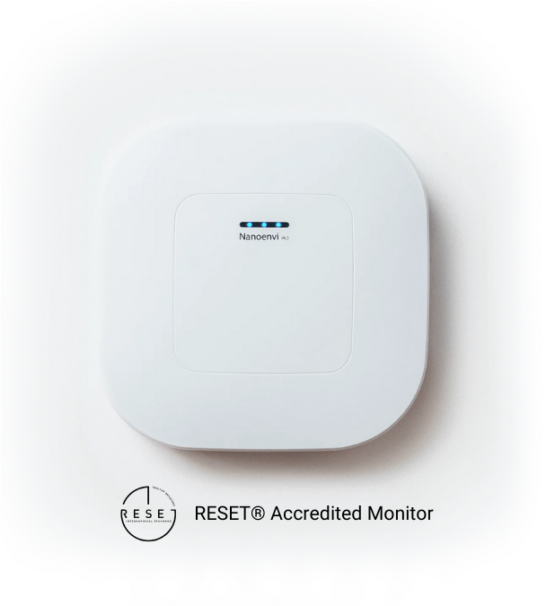
Healthy environment
Savings costs and efficiency
Prevents allergies
Improves ventilation
7 sensors in 1
AQI indicator
Nanoenvi IAQ is an indoor air quality monitor with RESET® accreditation that incorporates the most accurate sensors on the market and monitors up to seven key environmental variables that affect people's health, such as:
CO2
As more people occupy a space, carbon dioxide levels increase and there is less fresh air. Indoor exposure to this gas can affect performance and decision making and can also lead to headaches, restlessness and drowsiness. That is why it is important to act when its levels soar in work environments, schools, hospitality and fitness centers, either by reducing the number of occupants in a room or by increasing the ventilation rate (natural or mechanical). Nanoenvi IAQ uses a highly stable and accurate NDIR sensor with self-calibration capability for CO2 measurement.

VOC
Volatile organic compounds are toxins released by chemical products (cleaning and disinfection products, paints, varnishes, waxes, cosmetics, perfumes, deodorants, air fresheners, etc.). VOCs can cause serious short- and long-term health effects, from minor eye, nose, and throat irritations to liver and kidney problems. If VOC levels increase, it is advisable to increase ventilation or open windows to improve indoor air quality.
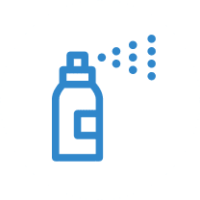
PM (1, 2.5, 4 and 10)
Suspended particles, also known as Particulate Matter (PM 1, 2.5, 4 and 10), are made up of a range of dust, dirt and liquid particles that are suspended in the air. Dust, fungi, bacteria, pollen are examples of particulate sources. The smaller and more invisible they are (such as PM 1 or 2.5), the more harmful they are to health, because they can be inhaled and penetrate deep into the respiratory system, causing everything from problems such as asthma and allergies to cancerous diseases. PM particles can remain in the atmosphere for quite some time and are freely transported by air currents. If these are released by a cough or sneeze, they can cause viral or bacterial infections. High levels of PM may indicate the need to use air filters or check HVAC system filters to mitigate exposure.

CO
Carbon monoxide is present in ambient air when fuel or other carbon-based materials are in contact. Short-term exposure can cause dizziness or headaches, and long-term exposure can lead to respiratory illnesses. Vehicles, gas stoves, barbecues, generators, and poorly maintained ventilation equipment are the most common sources of CO indoors.

Temperature
Optimum temperature conditions range between 20ºC and 23ºC. Any temperature above that can result in causing mental fatigue and affect performance and productivity. On the other hand, low temperatures can weaken the immune system and help the spread of viruses. Real-time monitoring of the temperature will allow you to make decisions such as adjusting the thermostat of the cooling system or deciding if it is necessary to open or close windows.

Humidity
Indoors, humidity can be increased by deteriorating construction materials in buildings, water damage, and poor plumbing systems. It is recommended to always maintain relative humidity levels indoors between 40% and 60% to enjoy a healthy space and prevent the spread of viruses. Low relative humidity levels can affect performance and cause dry skin and eczema. Conversely, high humidity levels contribute to the growth of mold and consequently increase the risk of asthma, allergies, and respiratory diseases.

Atmospheric pressure
Atmospheric pressure is related to air flows causing bacteria, dust, and other airborne contaminants. If the air pressure inside an indoor space is lower than outside, the pollution in the room does not flow into the surrounding areas. Higher pressure within an interior room will prevent contaminants from entering.

Smarter and safer indoors
When it comes to health and wellness, indoor air quality has an impact. Prioritize the creation of healthy, smart and safe indoor environments in all types of spaces and discover how Nanoenvi IAQ can help you achieve it.
Fertility Clinics
In fertility clinics, where there are critical spaces such as embryology laboratories, andrology or even operating rooms, it is essential to maintain optimal sterile conditions free of any embryotoxic risk.
VOCs (Volatile Organic Compounds) and other parameters such as temperature, humidity or particulate matter can endanger the implantation and viability of embryos.
Nanoenvi IAQ monitors indoor air quality every 30 seconds, 24/7, issuing alerts in case preset limits of any parameter are exceeded.

Hospitals
In hospitals, air is the major vehicle for the transmission of microorganisms. For nosocomial infection (infection that the patient acquires in the hospital), the combination of a pathogenic microorganism and a vehicle that serves as a transport to the patient, is necessary.
Nanoenvi IAQ measures these risks automatically and by zones in the hospitals through different air parameters that it sends to a web platform and allows to generate alerts to be sent automatically to the hospital managers.

Retail and leisure
Boost your business by sharing confidence in the quality of the air you breathe. Let your customers have the peace of mind of knowing that your establishment is safe, promoting well-being and guaranteeing shopping experiences free of contaminants and viruses. CO2 monitoring helps to guarantee capacity control, but it is also important to measure PM particles or VOCs to improve the air renewal rate and to know if natural or mechanical ventilation is necessary.

Workspaces
High concentrations of CO2 and VOCs can occur in workspaces, which can cause a decrease in the cognitive activity of workers and users. With Nanoenvi IAQ, promote the well-being and productivity of your workers for a better performance of their work. Air quality monitoring will reduce work absenteeism, improve the ventilation strategy, contribute to energy efficiency savings, and make employees aware of the importance of indoor air quality.

Gyms
In gyms and sports centers there are usually high levels of CO2, PM and VOCs that make it difficult for athletes to breathe. A laden air has an impact on physiological function during sports practice. Ensure a healthy environment for exercise by monitoring air quality. Nanoenvi IAQ contributes to an improvement in sports performance and in the ventilation and air renewal strategy.

Restaurants
The high concentration of people, emissions due to work in kitchens and the frequent use of cleaning products in disinfection tasks can cause high levels of CO2, CO, PM particles and VOCs in restaurants. Nanoenvi IAQ is a monitoring device that allows food business managers to act based on the quality of the air at that time, guaranteeing capacity control and a healthy and safe indoor environment for customers and workers.

Sustainable architecture
Interior design with optimal environmental conditions is becoming increasingly important in the urban and building field. Sustainable architecture implies a greater awareness of energy consumption, taking into account factors such as air quality. LEED, WELL and BREEAM are sustainable construction standards whose basic health concept is air quality. Nanoenvi IAQ is a monitoring device that allows optimizing efforts in these certification processes, since it allows managers to know what the air quality is like before the verification phase, carry out on-site performance tests and see reports in real time, something that can save time and money. In addition, measuring air quality also helps to better understand any environmental weaknesses in the interior space and act accordingly.
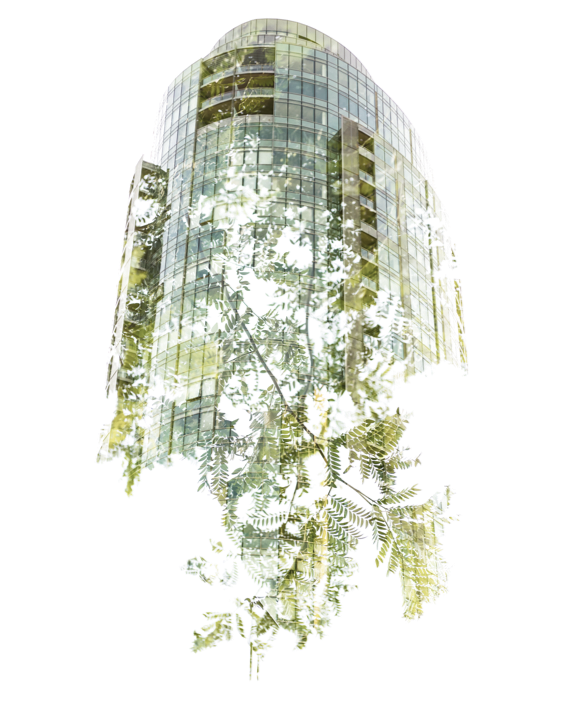
Energy Efficiency Engineering
Nowadays, energy engineering companies have a greater need to demonstrate the results of the real impact of their energy studies, audits and installations. Indoor air quality is gaining more and more weight in green certifications and is one of the most prominent requirements in energy efficiency regulations. Nanoenvi IAQ is an air quality monitoring device that saves efforts in carrying out IAQ audits, helps to optimize the cost of investment in installation engineering projects and improves the management of assets and energy resources.

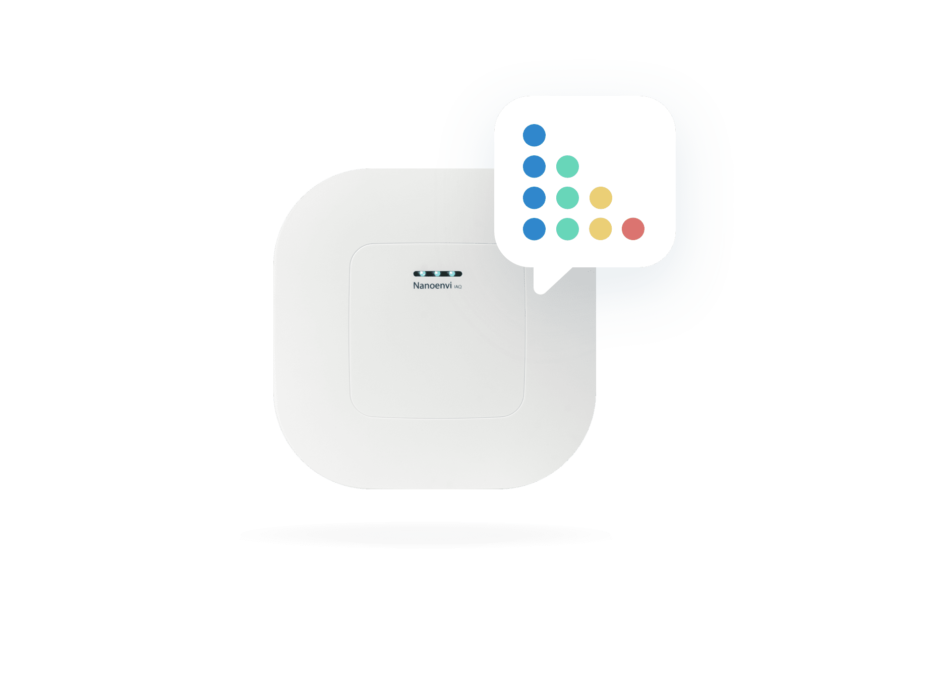
With Nanoenvi IAQ, users can see what the Ambient Indoor Air Quality Index (AQI) is like at a glance thanks to a color code.
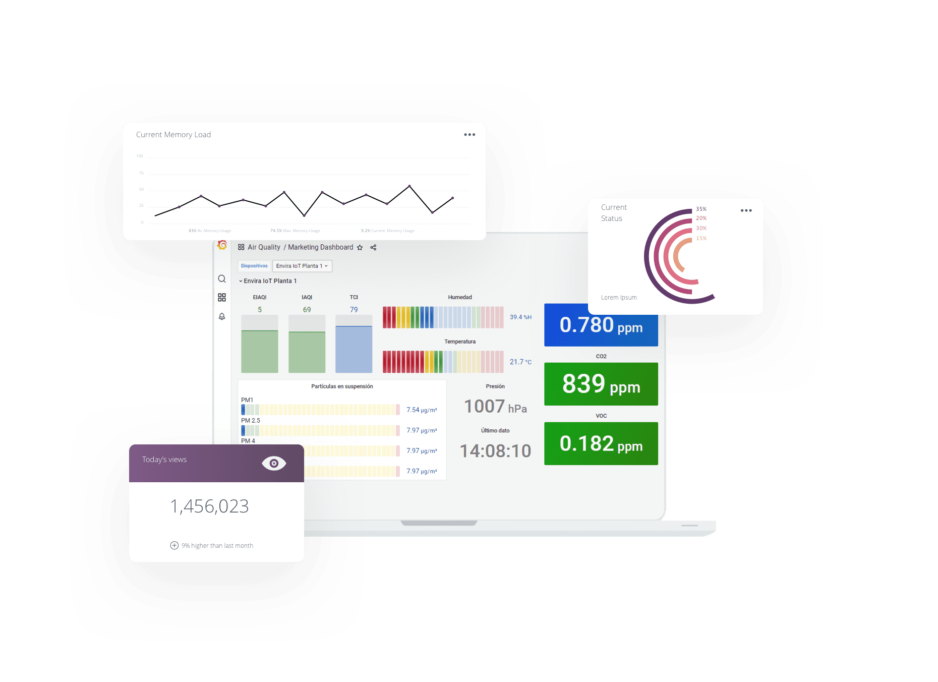
Manage and analyze air quality data at a glance with access to advanced trends and analytics.
Nanoenvi’s dashboard provides a quick and easy solution to view, compare and export data to manage air quality. The objective of the platform is to transform information into knowledge so that facility managers can easily identify and address any air quality issues and make the best decisions.
The dashboard is made up of different modules that summarize the data collected by each of the sensors and show analytics of their levels. In addition, it also calculates the ambient indoor air quality index (AQI) and the thermal comfort index (CT).
Go deeper and get more detailed information by changing the historical display (last hours, weeks, months or a year)
Own manufacturing
Nanoenvi IAQ is an own development of ENVIRA. The equipment is entirely manufactured in its official facilities and its sensors are calibrated one by one in an accredited calibration laboratory. Nanoenvi IAQ is backed by engineering support, repair and/or replacement service, and remote software updates.
Easy integration
Nanoenvi IAQ is a device that takes only minutes to install and is characterized by its ease of integration and support. The MQTT protocol allows each customer to decide how they want to exploit the data, with the possibility of configuring it against their own platform.
Know-how ENVIRA
Developed by an engineering team with more than 35 years of experience in the design, integration and commissioning of systems for measuring environmental quality and polluting emissions.
RESET® Standard
The Nanoenvi IAQ monitor has met all the objectives to obtain RESET AIR certification, so the sensor is accredited and certified to monitor indoor air quality in RESET projects.

C. del Monasterio de las Descalzas Reales, 21,
Nave 9, 50014
Zaragoza
12 Fir Dr, Northcliff,
Randburg, 2195,
Sudáfrica
C/ Alfonso XII, 31,
03203 Elx,
Alicante
R. Laurentino José do Prado, 183Parque Res. Jundiaí,
Jundiaí – SP, 13212-496,
Brasil
Av. División del Norte No. 525 – 701
Col. Del Valle, C.P. 03100, Benito Juárez,
CDMX
Cra. 36b #5b3-41, San Fernando,
Cali, Valle del Cauca,
Colombia
Calle 77B OEste, numero 46A,
Betania, ciudad de Panama
R. Bouça dos Estilhadouros 205,
4445-044 Alfena,
Portugal
Luis Felipe Borja N9-505
PG8P+Q3F, Quito 170138,
Ecuador
Kosti Palama 36,
Nea Chalkidona 143 43,
Grecia
125 Don Hillock Dr #14, Aurora,
ON L4G 0H8,
Canadá
Unit 1204, 12/F, Vanta Industrial Centre, 21-23 Tai Lin Pai Road, Kwai Chung, Hong Kong
3 Shenton Way, #11-08 Shenton House,
Singapur 068805
Calle Costa Rica, San José, 11801, Costa Rica
Khalid Bin Waleed St – Al Karama – Dubai – United Arab Emirates
Avda. Cortes Valencianas, 43A -D1. Valencia 46015 (Valencia), España
5a. avenida 11-35 zona 9, Guatemala
Ruben Dario, 16, 33125 San Juan de la Arena, Asturias, España
Calle La Dalia, 61-63. Local 1. 52006.- Melilla, España
64-1,Jalan Kempas Indah 1/1, Taman Kempas Indah, Johor Bahru, Johor., Malasia
Canario 11, Colinas de Santa Bárbara. Colima, Col, México. C.P. 28017
Avda.Elche, 157 nave 7, 03007-Alicante, España
Lamisingo Iturria Nº1, Edificio Ugalde., Oficina 109A, Irún 20303 – Guipuzcoa, España
Polígono Industrial Canastell, Calle Clavo, 13, 03690 Alicante, España
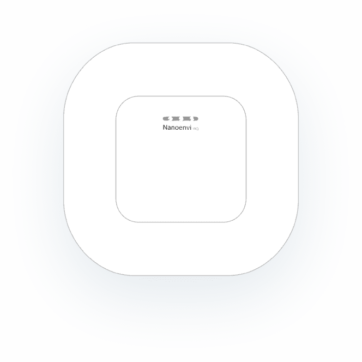
Sensors
Carbon Monoxide (CO)
Precision ± 100 ppm; range 0 ~ 5000 ppm
Volatic Organic Compounds (VOCs)
Precision ± 30 ppm; range 400 ~ 10000 ppm
Particulate Matter (PM1.5, PM2.5, PM4, PM10)
Precision ±15 μg/m3; range 0 ~1000 μg/m3
Carbon Dioxide (CO2)
Precision ± 30 ppm; range 400 ~ 10000 ppm
Temperature
Precision ± 1 º C; range 0 ~65 ºC
Reletive humidity
Precision ±5 %; range 10 ~95 %
Pressure
Precision ±10 hPa; range 500 hPa a 1150 hPa
Communications
Wifi
LoRaWan
Power supply
Voltage
100-240V AC @ 50-60 Hz
Maximum Current
0,18 A
Data protocol
MQTT
Device start-up via HTTP
OTA update download via HTTP
Remote configuration via JSON-RPC over MQTT
In order to use the Nanoenvi IAQ indoor air quality measurement device you only need a power supply, a WiFi network and a smartphone, tablet or PC.
Nanoenvi IAQ™ is designed for quick and easy installation. It has two modes of operation: configuration and communication. When the device is installed it starts in configuration mode: it creates a WiFi network and generates a web page to configure the WiFi network and the MQTT broker to which it will connect when in communication mode to send measurement data.
In this way, Nanoenvi IAQ™ can be configured from a smartphone or PC. Once configured and installed, it will start working in communication mode: it will measure air quality continuously and you no longer need to worry about the device.
Nanoenvi IAQ does not require the installation of a mobile App. Moreover, it does not force the customer to send the data to third parties. Nanoenvi IAQ™ uses the MQTT protocol, a standard and widely used data sending protocol. When the device is installed, the MQTT server to which it will send data can be configured. In this way, the user can decide where the data will be sent to, own the data and use it for their own purposes. This opens the door to an unlimited number of applications and freedom of integration without sacrificing privacy.
Nanoenvi IAQ does not require any specific maintenance. In addition, it implements configuration messages that allow to know the status of the device, perform software updates or change its configuration remotely. In this way, building managers or integrators can have control over the installed devices without travel or cost overruns.
When Nanoenvi IAQ is measuring and sending data, the color of the lights varies depending on the air quality. By default, this color is obtained from an air quality index calculated by the device. This calculation is implemented based on an algorithm developed by ENVIRA based on empirical studies by the company and different universities and air quality regulatory agencies. The algorithm weights gas concentrations, temperature and humidity with different weights.
The three indices that Nanoenvi IAQ calculates are:
In principle it is not necessary. The device implements state-of-the-art calibration algorithms. However, you can request a quotation if you require additional calibration.
It depends on the type of space and the application: each Nanoenvi IAQ is a sampling point, so the higher the number of sampling points, the higher the resolution and the more knowledge you will have about the air quality. It is up to the user or the installer (Senior Indoor Air Quality Technician) to determine how many sampling points they need. Some installers prefer to adhere to UNE 171330-2 (Indoor Air Quality, Part 2), others prefer to increase the number of sampling points in crowded places such as offices, meeting rooms, etc. On the other hand, certification standards such as WELL establish their own criteria for the number of sampling points and their placement. Ultimately, the number of Nanoenvi IAQ devices must be determined by the user or installer.
Each Nanoenvi IAQ includes: